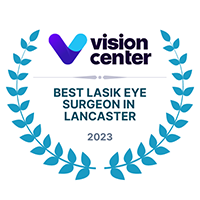The leading cause of vision loss in people 50 years or older is age related macular degeneration (AMD). It is very common but many people don’t realize they have AMD until their vision is very blurry. This is why it is important to have regular visits to an ophthalmologist. Early signs of AMD can be caught by your doctor before you have vision problems.
AMD happens when a part of the retina called the macula is damaged. With AMD you cannot see fine details up close or far you and you lose your central vision. Your peripheral (side) vision will still be normal but you may have dark areas in your central vision
Dry AMD and Wet AMDDry AMD is more common than wet AMD. Dry AMD happens when parts of the macula get thinner and very small clumps of protein grow. Central vision is slowly lost.
Wet AMD is less common but much more serious. Wet AMD happens when abnormal blood vessels grow under the retina causing scarring of the macula. Vision is lost faster with wet AMD than with dry AMD.
Are you at risk for getting AMD? You are more likely to develop AMD if you:
Are overweight
Have a family history of AMD
Are Caucasian
Have heart disease
Have high cholesterol levels
Smoke cigarettes
eat a diet high in saturated fat (found is foods like cheese, butter, and meat)
Diagnosing AMDYour ophthalmologist may ask you to look at an Amsler grid which will help you notice any blurry or blank spots in your vision. During your exam, your eyes may be dilated so your doctor can look at the inside of your eye through a special lens. To look closely at the retina, you may have special testing with an Optical coherence tomography (OCT). A machine provides detailed images of the retina and macula. Treating AMDPatients with dry AMD might benefit from taking a certain combination of nutritional supplements. Your ophthalmologist can tell you if these vitamins and minerals are recommended for your dry AMD:
Lutein (10 mg)
Zeaxanthin (2 mg)
Vitamin C (500 mg)
Vitamin E (400 IU)
Zinc (80 mg)
Copper (2 mg)






